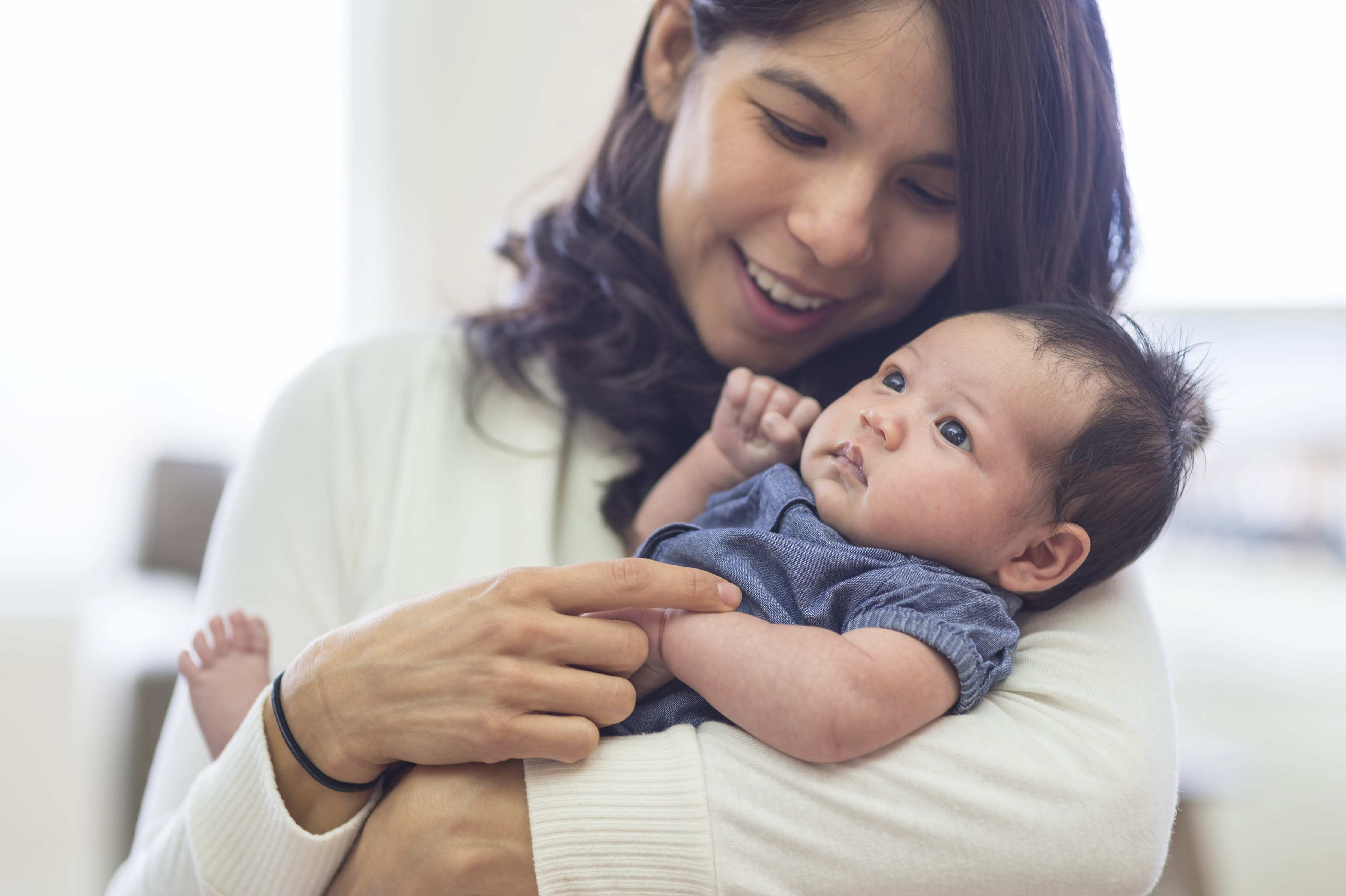Your baby is not nearly as fragile as you might think. Babies are pretty resilient and have many natural reflexes. However, you should still handle your baby gently, not just for safety, but also to keep them feeling safe and secure.
Holding your baby
All babies come into the world with what is known as the startle, or Moro, reflex. In the startle reflex, loud noises or sudden movements may cause your baby to arch their back, throw out their arms and legs, and cry. This natural reflex usually lasts about four months. To avoid causing your baby to startle, handle them slowly and support their entire body when you hold them. Allowing their legs and arms to dangle could make them feel unsafe and cause them to startle.
Always make sure to support your baby's head and neck when holding them. They will feel safe and secure if you support their head and neck with one hand, and their bottom and thighs with the other. Hold your baby close to your body for added security.
When putting your newborn baby down to sleep, move slowly and gently to avoid waking them up or causing them to startle. Put your baby’s head down first, and then gradually lay the rest of their body down. Remove one hand slowly, and then the other. If your baby tends to startle when they are put down to sleep, try swaddling them before putting them down. Remain with your baby for a few more minutes, slowly stroking them and speaking to them in a soft, soothing voice. Wait until they are settled before leaving.
Always remember never to shake your baby. Shaking can lead to serious brain damage. Sometimes your baby’s crying may push you to the limit, and you may feel like shaking your baby out of frustration. If you have tried several methods to console your baby, and they continue to cry, it is okay to place them somewhere safe, such as their crib, and take a short break or seek help from others. Check on your baby after 5-10 minutes and see if you can console them when you are relaxed. Grandparents and other caregivers also need to know that they should never shake a baby, and that they can contact you if they are having difficulties consoling your baby.
Dressing your baby
When you buy outfits for your baby, avoid turtlenecks, skin-tight sleeves, multitudes of buttons and zippers down the back. It is difficult enough trying to wrestle a wriggly and fussy baby into any outfit. Do not make the process more difficult than it has to be.
Outfits with buttons, beading, ties or drawstrings can pose a choking or suffocation hazard for babies. It is better to choose lightweight fabrics that fasten with zippers to avoid this. You can also look for clothing that has a low fire hazard label and choose tighter fitting clothing to prevent it from catching fire on common household items such as candles, stove elements, and matches.
When planning to go outside, dress your baby in the same number of layers that an adult would need for the weather. Try to resist the urge to overdress your baby in the summer. In winter, your baby needs a hat to protect their head against heat loss.
Lie your baby down when you are dressing them. Always keep one hand on your baby while you are dressing them if they are on a change table or other surface, to prevent falling. Babies can begin to roll as early as 4 months of age, so it is good to practice keeping them secure on high surfaces from the time they are born. Remember that, for the first little while, when you dress your baby, you will need to do everything for them. It will be a while yet before they can put their hands through the sleeves on your prompting. You will need to guide their arm through each sleeve, and likewise for their legs.
Regardless of what the neighbour next door says, your baby does not need to wear shoes before they start to walk. You can keep their feet warm in winter with booties or socks.

